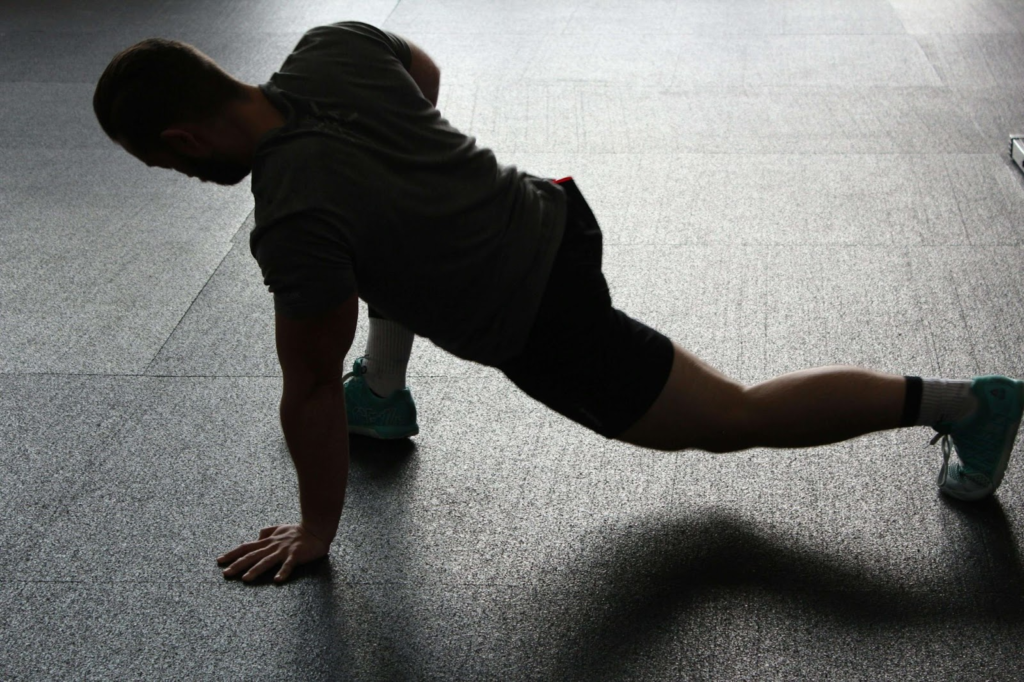Spending countless hours at the gym doesn’t always equate to muscle growth. Pushing your body harder, trying to get that last rep in, may just lead to burnout or a plateau.
But if you’re not maxing out every session at the gym, how are you supposed to build muscle? It’s essential to workout smarter, not harder, and optimize your gym time rather than maximize it. Training smarter means caring about recovery, form, nutrition, and more.
By focusing on the fundamentals, you’ll get more done with a body that isn’t constantly overloaded. The best part? You’re building more muscle in less time. We’ve curated a list of insights to enhance your training, focusing on quality, efficiency, and recovery rather than mindless grinding.
1. Workout Smarter by Perfecting Your Form
If there’s one area of exercise you need to perfect, it’s form. Continuing to overload without the proper form is going to yield diminishing results at best and serious injury at worst. Exercises performed correctly are more challenging and directly target the intended muscle groups compared to those done with improper form.

One of the easiest ways to improve your exercise form is to begin with lighter weights. This way, there’s less strain on your muscles, and you can really look at the movements. Light to moderate weights also grant better mobility and help improve balance and coordination, which is particularly useful for leg exercises.
Perfecting your exercise form before increasing the reps or weight means fewer plateaus and better muscle growth. Just make sure to warm up beforehand to ensure your muscles are warmed up and ready.
2. Train Less, Gain More: Recovery as the Key to Muscle Growth
For some gym goers, rest days are a thing of the past, and exactly the reason why they can’t make any more progress. Think of exercising without a break or rest like driving a car without tires. Rest is an essential ingredient for long-term progress and exercise without injury.

Smart athletes know that muscle recovery is where growth actually happens. Training creates microtears in the muscles, and the body heals these while resting, not lifting more. Resting, in turn, refuels the body and allows you to progress faster with higher repetitions and heavier weights.
A simple way to rest is to improve your sleep quality and quantity. Eight hours of quality sleep is enough to replenish the body’s mental, physical, and emotional capacity (for most people). Improving your sleep means resting in a relatively cool environment with little to no noise and dim or no light sources.
Make sure to incorporate rest into your workouts as well. Take a slightly longer break during exercise sets on days you aren’t feeling great to avoid injury. A 60-90 second break between sets is the optimal recovery time for muscle growth.
3. Simultaneous Muscle Growth with Compound Exercises
Compound exercises are multi-joint movements that engage multiple muscle groups simultaneously. Everyone loves exercises that target specific muscle groups, like bicep curls, but compound moves are a godsend that save time.

Push-ups, pull-ups, squats, and deadlifts are all examples of compound exercises. These moves mimic real-life activities so they don’t just build muscle but improve coordination in everyday life.
Beginners in particular should follow workout routines that primarily utilize compound exercises. This is because those new to fitness are more likely to see visible muscle growth, at least in the early stages. By exercising multiple muscle groups at the same time, you’ll notice definition all over your body.
4. Nutrition and Hydration for Maximum Results
If sleep were the tires on a car, nutrition and hydration would be the fuel. Inadequate nutrition is a recipe for disaster. Even a slight dip in hydration can degrade performance, and missing nutrients can leave you fatigued, sore, and more prone to injury. Not eating well and failing to meet protein goals are among the most common reasons why gym-goers plateau.

The solution is simple. Eat a protein-rich diet, hydrate every hour, and time your meals. The best times to refuel are anywhere between 1-2 hours before exercising and 1-2 hours after. Following this routine ensures the body receives fuel at the right time and efficiently increases muscle growth.
Foods you should be eating include lean protein sources such as chicken, fish, and legumes. Apart from these, anti-inflammatory foods do wonders for your gut health and recovery times.
There’s a lot of debate about whether or not to hydrate during workouts. In my experience, sipping water before and after your workout is better than during it. Instead, stock up on a few electrolyte drinks to have during breaks in your workout, especially when you sweat.
5. Progressive Overload for Continuous Muscle Growth
Once you’ve got a handle on the basics, progressively overloading is the best way to make sure your muscles grow. This simply means gradually increasing the stress you place on your muscles so they adapt and grow stronger over time. Without it, your body quickly adjusts to your workouts, and progress plateaus.

Keeping a log of your repetitions and sets also goes a long way in tracking gradual strength progressions and avoiding workout plateaus. Progressive overload comes into play when you can perform each set with near-perfect form. The most common way to progressively overload is to add weight in slight increments.
If you don’t have access to heavier weights, fortunately, there are a few more ways to overload. Increasing the number of repetitions or sets also does the job. Even switching up the tempo to a more nuanced and slow approach is also considered progressive overload.
My favorite way to progressively overload is to reduce rest times between sets. This is also a great way to burn off more calories and lose weight. However, remember to keep a close eye on recovery and rest. Don’t cut break times in between sets too short.
Final Thoughts
While a lot of these insights may seem counterintuitive to quick gains, remember that slow and steady always wins the race. Sustainable fitness habits like form, recovery, compound movements, efficient nutrition, and progressive overload, you get the same results in less time.
It’s common for beginners to skip ahead to more challenging exercises, but it’s just as easy for experts to forget the basics. Remember that in the end, exercise is meant to take care of the body, not damage it. The goal is sustainable muscle growth without any injuries.


